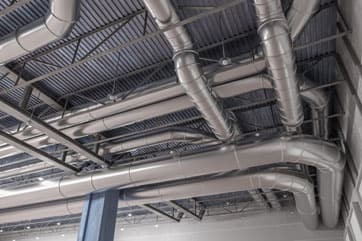Proper ductwork plays a critical role in ensuring the efficiency and effectiveness of a furnace installation. It is not only responsible for circulating conditioned air throughout a building but also influences energy consumption and overall comfort levels. In this article, we will explore and discuss the top factors that highlight the significance of proper ductwork in maximizing the efficiency of a Furnace Install
Optimal Airflow Distribution
One of the primary functions of ductwork is to distribute air evenly from the furnace to various rooms in a building. Properly designed and installed ductwork ensures that warm air is efficiently delivered to each space, eliminating hot or cold spots and providing consistent comfort. A well-balanced distribution of airflow promotes an even temperature throughout the building, reducing the strain on the furnace and minimizing energy wastage. In contrast, inefficient ductwork can lead to air leaks or blockages, resulting in uneven heating, increased energy consumption, and frequent maintenance issues.
Minimized Energy Loss
Efficient furnace operation depends on the insulation and sealing of the ductwork. Leaky or poorly insulated ducts can cause substantial energy loss as warm air escapes into unconditioned spaces like attics or crawl spaces. This leads to both financial and environmental consequences, as energy is wasted unnecessarily. By ensuring proper insulation and sealing during installation, heat loss can be significantly minimized.


Reduced Pressure and Load on the Furnace
A properly designed duct system helps maintain an optimal pressure balance, reducing strain on the furnace. Insufficient airflow due to inadequate ductwork design can cause increased resistance, leading to higher static pressure within the system. This added pressure forces the furnace to work harder, consuming more energy and potentially shortening its lifespan. Conversely, proper ductwork design ensures the correct size and configuration of ducts, allowing for adequate airflow, lowering static pressure, and minimizing the workload on the furnace.
Improved Indoor Air Quality
Ductwork also plays a crucial role in maintaining indoor air quality. Airborne contaminants, such as dust, pollen, and mould spores, can enter the ducts through air intakes or leaks. With improper ductwork, these contaminants can accumulate and circulate throughout the building, potentially causing health issues and triggering allergies or respiratory problems. Properly designed and sealed ductwork mitigates the risk of contaminants entering the system, ensuring that occupants breathe clean and healthy air. By investing in well-designed duct systems, homeowners can enjoy consistent comfort, lower energy bills, extended equipment lifespan, and a healthier living environment. It is crucial to engage professional HVAC contractors with expertise in ductwork design and installation to reap the benefits of a properly functioning and efficient furnace system.


